The ultimate guide to dry wells: Protecting your home and garden
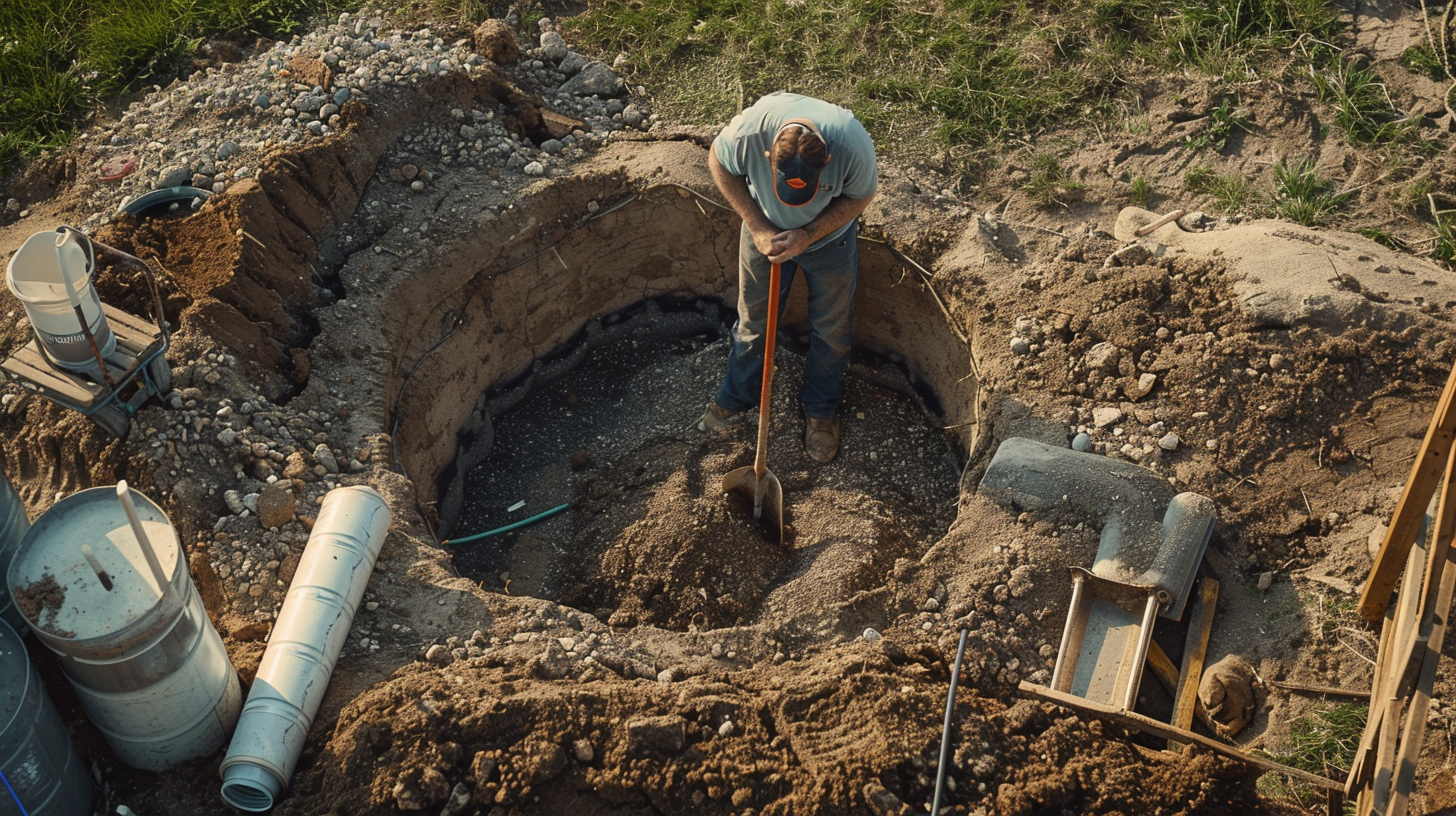
Protect your home with an unsung hero in drainage…the dry well.
This guide will walk you through everything you need to know. Learn about dry well design and installation, their basic function, maintenance, and the benefits. Let’s dig in to ensure your property remains dry and thriving.
In every homeowner’s life, the battle against water damage and inefficient landscape drainage is ongoing.
Enter the dry well: an unsung hero in the world of residential landscaping and water management. It’s a solution that can protect your home from water damage, enhance your garden’s health, and contribute to a sustainable environment.
What are dry wells?
A dry well is a simple, yet ingenious solution designed to manage excess water, particularly stormwater and roof runoff. This system is designed to redirect stormwater and roof runoff away from your home, using the natural force of gravity. It helps prevent water from pooling in your yard, safeguarding your basement against floods and nurturing your garden’s well-being.
Dry wells are an underground pit filled with gravel or rubble that allows water to be absorbed into the ground, away from structures and landscaped areas that could be damaged by excess moisture.
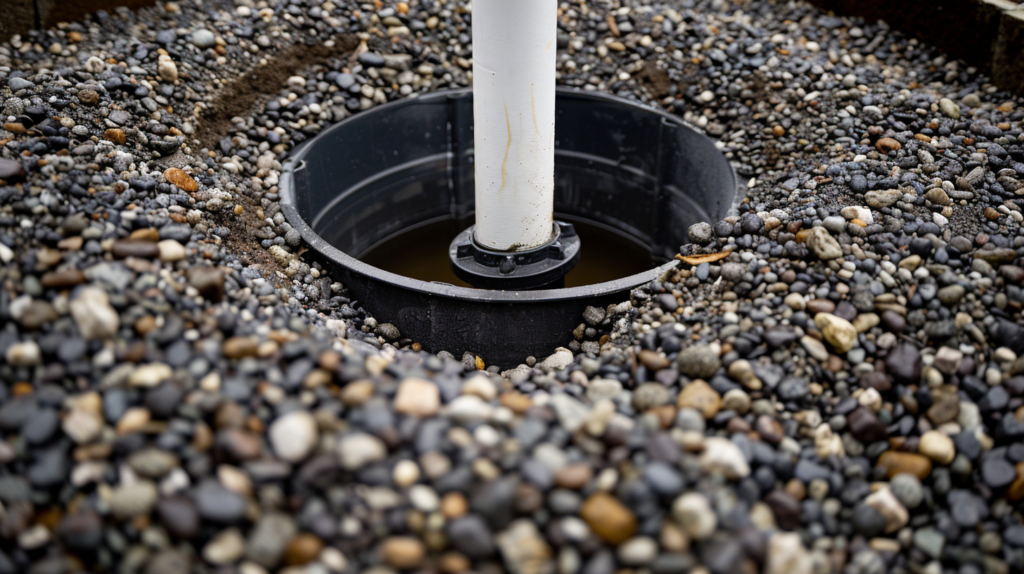
For every homeowner, the fight against water damage is relentless. Dry wells are the versatile guardians of your home and a friend of the environment or your garden.
Whether it’s a torrential downpour or the daily discharge from your household, dry wells stand ready to channel that excess water into the ground, away from where it can do harm. From the rock-filled trenches that quietly blend into your landscape to sophisticated prefabricated units, dry wells can be as simple or as advanced as your situation demands.
By installing a dry well, you’re not just solving a drainage problem; you’re taking a bold step toward environmental stewardship.
Dry wells reduce the burden on municipal stormwater systems, replenish groundwater supplies, and prevent erosion that can devastate your landscape. Dry wells are an eco-friendly choice that supports sustainable water management practices. By installing a dry well, you’re taking a step towards sustainability. You’ll reduce runoff pollution, help recharge local aquifers, and contribute to a healthier ecosystem around your home.
So if you decide to get one, you can take pride in knowing that it’ll benefit your home and the planet!
Types of dry wells and their uses.
Dry wells can range from simple gravel-filled pits to sophisticated prefabricated tanks. The choice depends on your budget and specific needs.
The type of dry well you use when dealing with light residential runoff will be different from dealing with larger volumes of water that need a more robust system.
How to identify the right type of dry well for your needs.
Choosing the right type depends on several factors, including the volume of water, your property’s layout, and your budget. Here’s a closer look at the options:
- Gravel-filled pits: Ideal for homes with moderate runoff issues. These are cost-effective and can be easily installed in a backyard to manage water from downspouts or light rainwater collection.
- Prefabricated tanks: Suited for properties with significant runoff, such as those with large roof areas or heavy rain exposure. Prefabricated tanks have higher capacity and durability, ensuring efficient water management even during heavy storms.
- Concrete dry wells: Best for commercial properties or residential areas with very high water volumes. Concrete dry wells offer longevity and high performance but require professional installation.
- Eco-friendly dry wells: These incorporate sustainable materials and designs, such as permeable layers that promote groundwater recharge while filtering runoff. They’re perfect for environmentally conscious homeowners.
Dry well design and installation.
The journey to installing a dry well begins with understanding your unique landscape needs and ends with the joy of a well-managed water system. It’s a project that invites you to engage deeply with your environment, armed with the knowledge and tools to make a lasting difference.
Your dry well installation begins with planning. Consider the size of your property, the average rainfall, and the soil’s absorption capacity. It’s crucial to choose the right location to avoid inadvertently directing water toward your home or a neighbor’s property.
Dry well installation: Step-by-step.
- Site Selection: Identify where water collects and select a site at least 10 feet from any structures.
- Permits: Check with your local building department to see if permits are required.
- Excavation: Dig a hole to the recommended depth and width for your chosen system.
- Filling: Fill the bottom with gravel, then install the dry well tank, if using, and backfill with more gravel.
- Piping: Connect any gutters or downspouts to direct runoff into the dry well.
- Finishing Touches: Cover the top with landscape fabric and soil, then replant grass or apply mulch.
Check out this complete guide on how to build a dry well.
Maintenance tips for your dry well.
Don’t sweat it, maintaining your dry well is fairly straightforward. Inspect it regularly for silt or debris buildup, and ensure that gutters and connecting pipes are clear of blockages.
When properly maintained, a dry well can provide up to three decades of reliable service, making it a sustainable and effective solution for managing excess water.
What does a dry well cost, and is there long-term savings?
The cost of installing a dry well varies, but the long-term savings on potential water damage repairs can be significant. Plus, many municipalities offer incentives or rebates for sustainable water management solutions.
As of November 2023, the costs for installing a dry well averaged around $3,030, with the financial commitment varying significantly between $1,165 and $4,420. There are several factors in cost variance including the specific design and size of the dry well, geographic location, the complexity of the installation process, and the materials selected for construction.
Let’s wrap this one up.
Plain and simple, dry wells are a practical, cost-effective solution for managing excess water on your property. With the right planning and maintenance, they can protect your home from water damage, support your garden’s health, and contribute to environmental sustainability.
It’s an investment in your home’s integrity, your garden’s vitality, and our planet’s future.
Need help?
We’ll design and install a dry well solution that will stand the test of time and weather any storm.
Recommended Posts
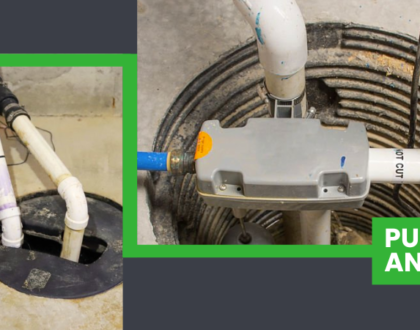
Ultimate sump pump guide: Keeping your home dry and healthy
February 15, 2024
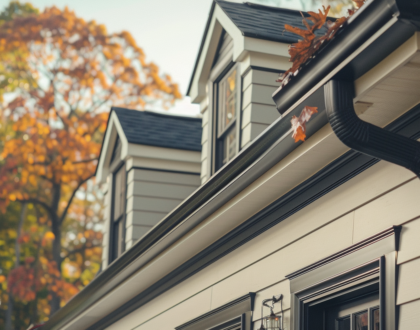
How to keep your home safer and more dry.
February 13, 2024
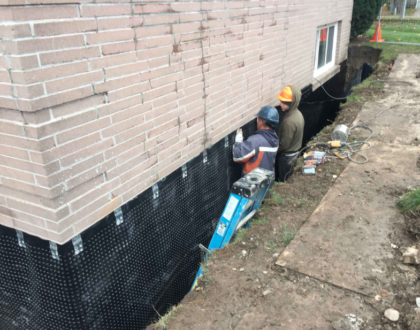
Basement waterproofing is risky business for do-it-your-selfers
December 11, 2023
